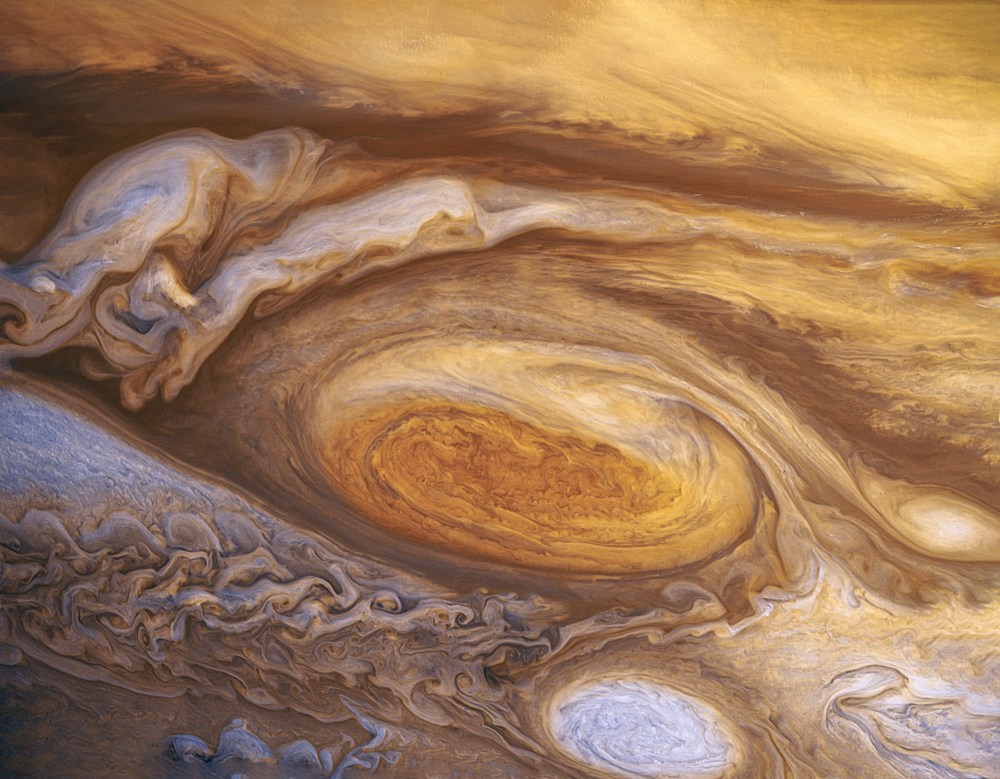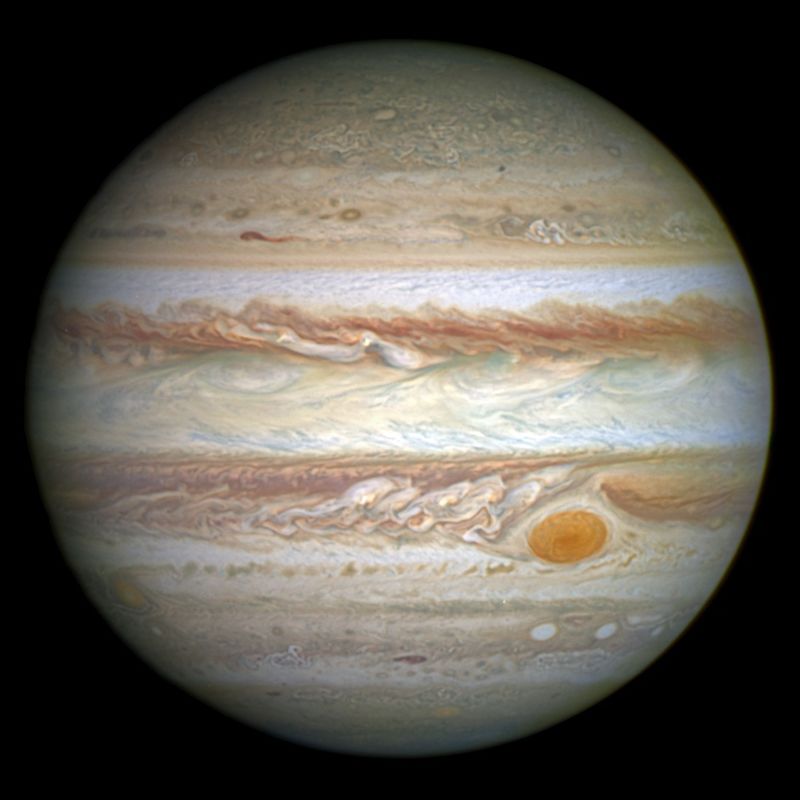
Jupiter’s Great Red Spot, as seen by the Voyager.
Credit: NASA/JPL/Björn Jónsson/Seán Doran
We just celebrated Juno‘s first year at Jupiter this 4th of July. Tomorrow, we’ll all be squealing with excitement about the closest ever flyby of the Great Red Spot. On July 10th, at 6:55 PM PDT, Juno will be at perijove (the closest point to Jupiter’s center). Then, 11 minutes and 33 seconds later, Juno will be right above and really close to Jupiter’s Great Red Spot. How close? Just 5600 miles (9000 km) above the cloud tops of the GRS. Juno will provide humankind with its closest look ever of this beast of a storm.
The GRS is gigantic. At about 10,000 miles (16,000 km) across, you can fit about two Earths across it! It’s a gargantuan storm with winds as high as 400 miles per hour (that’s like 650 km/h), and it’s been raging for centuries, likely over 350 years! Take a look at that image of the GRS above. It’s an image that Björn Jónsson originally processed, and Seán Doran processed further, resulting in an image with fantastic detail. LOOK AT THAT STORM. It’s been Jupiter’s center of attention, with scientists puzzled about the dynamics of the storm, and enthusiasts waiting with telescopes to catch the GRS while it’s in view. It’s also distinctly red, another puzzle scientists are trying to figure out.
Jupiter’s atmosphere consists of predominantly hydrogen and helium, but its cloud tops also contain small amounts of ammonia, ammonium hydrosulfide, and water. So maybe what’s happening is that the ammonium hydrosulfide is experiencing chemical reactions that turn it the red hue we see (read more on this in the link posted above). We also know the GRS gets its energy from Jupiter’s interior, which is probably why it’s persisted for centuries. When Juno flies above the cloud tops of the GRS at strikingly close proximity tomorrow, it’ll get new information on the GRS from its cloud tops and learn more about how deep the storm goes and its dynamics. What will Juno discover? Well, we don’t know; what we do know is that Juno has revealed Jupiter to be a gas giant full of surprises! For one, we thought that either Jupiter has a solid core, or has none; turns out Jupiter has a fuzzy core! You can read more on the surprising discoveries Juno has made in a blog post by my friend and astronomer Phil Plait, here.
While we wait for the images (which will come a few days after the flyby; YES, the JunoCAM will be on during this time!!), let’s look at some of our great views of the Great Red Spot.

Jupiter in the infrared, taken by the Gemini North Telescope on May 8, 2017.
Credit: Gemini Observatory/AURA/NASA/JPL-Caltech

Jupiter’s Great Red Spot as seen by Voyager 2 on July 7, 1979.
Credit: NASA/JPL-Caltech/Kevin M. Gill

Animation showing the Great Red Spot move with Jupiter’s rotation.
Credit: Mike Salway

Jupiter featuring the Great Red Spot, taken by the Hubble Space Telescope April 21, 2014.
Credit: NASA/ESA/A. Simon (Goddard Space Flight Center)

Swirling clouds on Jupiter as Voyager 1 approached the planet.
Credit: NASA/JPL-Caltech
Of course, there are so many more. But I thought it fitting to close of this post with the animation taken by Voyager 1 as it approached Jupiter. What a beautiful planet.
Man, those images will be priceless. Can. Not. WAIT.
LikeLiked by 1 person
Neither can I!!
LikeLike